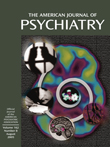Smokeless Tobacco for a Nicotine-Dependent Schizoaffective Patient
To the Editor: Approximately 83% of the patients with schizophrenia and 65% with mood disorders are nicotine dependent (1). The following case demonstrates the benefit of switching from smoking to oral tobacco in a severely nicotine-dependent psychiatric patient.
Ms. A, a 52-year-old woman with schizoaffective disorder, bipolar type, started smoking shortly after her first psychotic episode at age 19 and, on average, smoked about 1 packs per day for 33 years. She had attempted to quit using pharmacotherapy, nicotine gum, or patches in combination with cessation classes. Both gum and patch treatments were ineffective since they did not control her craving for cigarettes. Her motivation to quit was strong because of the sequelae of smoking: bronchitis, isolation from others, and destabilization of her psychiatric illness from frequently awakening to smoke. Her brother with a bipolar disorder had experienced severe burns over most of his body and died secondary to a fire caused by his smoking. For her, smoking had become a constant reminder of his suffering, which led to nightmares and further isolation. She was afraid to jeopardize the health and safety of others.
One year ago, she was cross-titrated over a 1-week period to oral pouches. Since that time, she has not resumed smoking, and her psychiatric and medical symptoms have stabilized. Before her cessation of smoking, she lived an isolated existence. Now she resides with and cares for her parents. For Ms. A, ceasing to smoke was a life-changing event.
Using smokeless tobacco is less deleterious to health and less socially stigmatizing than cigarette smoking. According to Dr. Rodu, dentist and oral pathologist, switching to smokeless tobacco considerably reduces the risk of all cancers, including oral cancer. Rodu and Cole (2) published similar results in Nature, demonstrating that the life expectancy of a 35-year-old smokeless tobacco user is relatively the same as that of a nonuser, while a smoker’s life expectancy is around 7.8 years less than both the nonuser’s and the smokeless tobacco user’s life expectancy. Because long-term success rates of nicotine-substitution products are often low, the substitution of smokeless tobacco may be more desirable for individuals who have failed traditional techniques of cessation. These results—along with population-based studies demonstrating decreased relative risks for cardiovascular, respiratory, and oncological disease with smokeless tobacco compared to smoking—have prompted a pilot study using smokeless tobacco as a substitute for smoking in inveterate smokers. This study found a 25% cessation of cigarette use at the 1-year mark (3). These data, combined with the experience of our patient, suggest that in select patients, smokeless tobacco may be less harmful than continued smoking.
1. de Leon J, Diaz FJ, Rogers T, Browne D, Dinsmore L: Initiation of daily smoking and nicotine dependence in schizophrenia and mood disorders. Schizophr Res 2002; 56:47–54Crossref, Medline, Google Scholar
2. Rodu B, Cole P: Tobacco-related mortality (letter). Nature 1994; 370:184Crossref, Medline, Google Scholar
3. Tilashalski K, Rodu B, Cole P: A pilot study of smokeless tobacco in smoking cessation. Am J Med 1998; 104:456–458Crossref, Medline, Google Scholar



